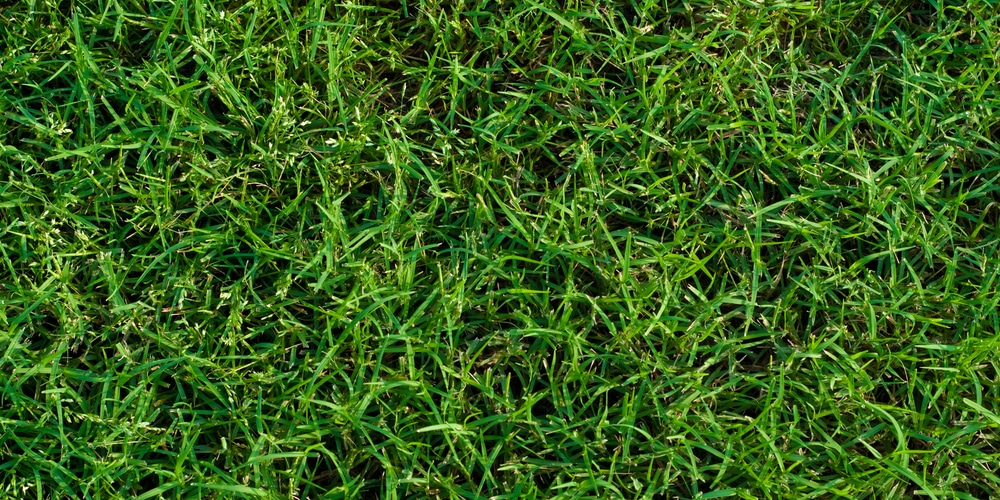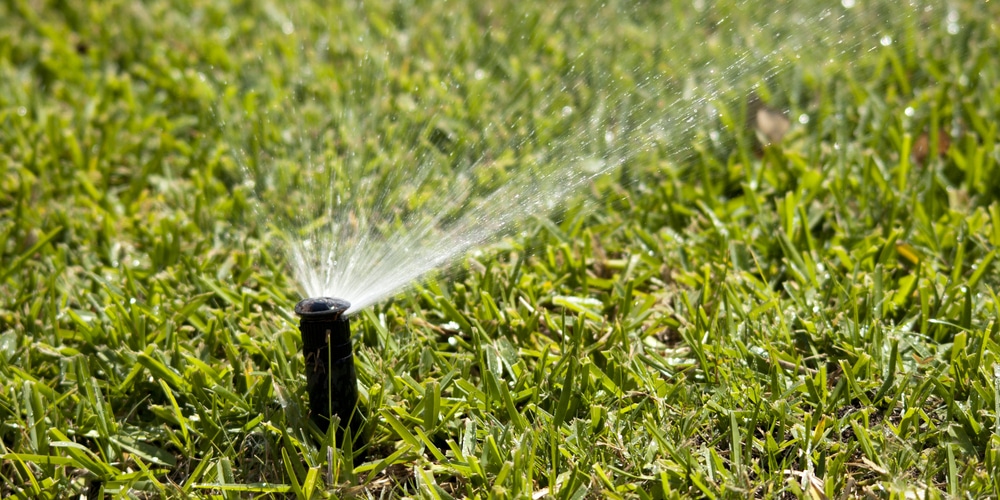Does your neighbor’s healthy dark green lawn make you envious? Is it even more infuriating that you don’t know how to make your lawn look half as good as theirs? We feel your frustration. If your lawn has yellow, weak grass, you certainly need a new lawn care routine to give it back its original green color. Let’s look at how to get dark green grass.
How to get dark green grass
Fortunately, it is possible to get a dark green lawn with several easy steps. To give you a hand, we’ve compiled several tips, and soon enough, you’ll see your turf thriving and your neighbors envying you.
Here they are:
Iron application
One of the most efficient ways to get dark green grass is using an iron supplement. So, if you have been fertilizing and watering your grass, and it is yet to become thick and healthy, it’s time to go for some Iron.
Applying iron can be handy for all grass types; however, some species thrive more with additional iron like Fescue and Bluegrass than others. So, how does iron application help? It aids the foliage of your grass. From flowers and vegetables to grass and citrus plants, apply some iron on them if you’re looking to have dark green leaves. Ironworks like a charm; even during summer, when other people’s lawns start looking yellow due to the heat, yours will still be green and healthy.
How to apply iron
Apply the iron supplement to the grass by combining it with a slow-release fertilizer during spring. It would help if you waited until the temperatures are about 600 outside before using it. Also, you can continue applying it this way throughout the year to maintain that dark green color to offer your turf the micronutrients it requires.
All the same, when applying the iron, make sure you follow all the instructions on the package to avoid overdosing. This might lead to damage like turning the grass grey, though it won’t necessarily kill it.
There is a wide range of iron fertilizers to choose from. You can go for synthetic iron fertilizers, manufactured and typically applied in granule form. Then again, a hose-end sprayer works swiftly and is the perfect choice if you’re searching for quick results.
There are some cons to applying synthetic iron fertilizers. For instance, if you apply excessively, it will turn your grass gray. Likewise, if some iron fertilizers get on your concrete, they can blemish it with a nasty orange stain.
How to get dark green grass: Watering tips
It is essential that you water your grass wisely to get that desirable healthy lawn. Grass typically needs as much water as the soil. Normally, grass blades feature numerous minuscule holes, known as stomata. Their role is to absorb nutrients and water via the roots. These elements are crucial for the grass to make food, also known as photosynthesis.
These pores also eliminate waste from the grass as well as excess water, also called transpiration. Therefore, if the grass is not watered adequately, these processes won’t take place as they should, and your lawn’s health will deteriorate. Consequently, the first thing to go will be that magnificent dark green shade. That being said, the soil type affects how often you need to water and the timeframe for every watering session.
Sandy soil
Usually, sandy soil absorbs water swiftly and, in the same way, loses it since it drains rapidly. So, if your turf sports sandy soil, you have to water it frequently. Again, it would be best to boost your soil after some time by top-dressing it annually using compost.
Loam soil
Loam soil is the most suitable for your lawn since it has an impressive absorption rate and can hold the water for an extended period.
Clay soil
As for clay soil, it is challenging to water, and some types of grass will strive in it than others. This is because clay soil takes quite some time to absorb water properly, but it holds it for an extended period; thus, you might not require watering it as often.
Watering for dark green grass
Generally, you should use roughly one inch of water weekly for your turf. If you reside in an area that’s not particularly rainy, you’ll require additional water.
Remember that once the soil depletes the water, it does it from the lower part into the deep layers. For this reason, deep watering is essential for green grass. It promotes deep growth of the roots, which supports the grass and lets you water less often. When it comes to deep watering, you can attain it by watering for longer periods. This simply means you should water all the lawn long enough for the soil to look completely saturated; to a 6-inch depth.
To check, you can utilize a screwdriver to pierce the soil, as it will come in handy in determining an average watering duration for the sprinklers.
How to get dark green grass: Fertilization
Research and determine the most suitable fertilizer to apply depending on your area of residence to meet your needs. If you’re currently beginning to amp your lawn game, begin by doing a soil test. This will show you where your lawn stands, and you’ll better understand what it requires and what it doesn’t.
Again, it will save you cash and time by avoiding using products that aren’t suitable for your yard. For the first several years, you can have a soil test every year, and then you can do it once after a few years when you better comprehend your lawn and what it requires to flourish.
Your local landscaping service will do a soil test, or you can purchase a kit and do it yourself. After this, you can sufficiently fertilize the lawn and utilize the right products and eventually achieve your lawn goals!
How to get dark green grass: Final thoughts
Having that desirable, dark green, thick lawn is possible. Simply apply some iron to achieve a nutritional balance, water wisely, and use the fertilizers that align with your dream lawn. Again, when it comes to mowing, do it less often and leave clippings behind. What’s more, you should switch the blades for the mulching grass for ideal growth and remove all weeds.
All the same, there’s no difference whether you choose synthetic or organic fertilizer. Even though eventually, an organic fertilizer might be better suited for your lawn, synthetic fertilizers can offer your grass a faster color boost.


